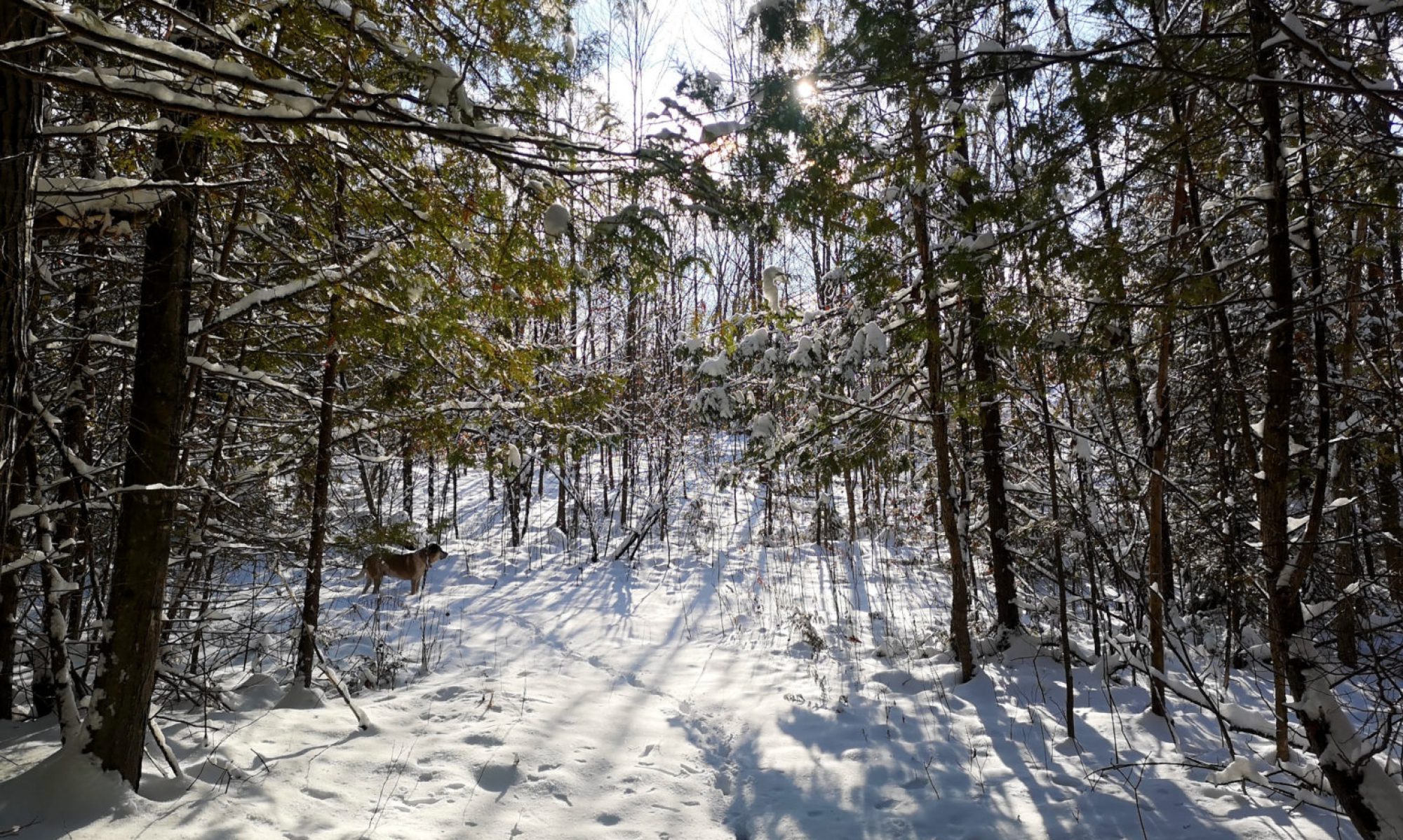
We made maple syrup again this spring, from two giant old maples right near the house — tapped them with spigots (called “spiles” apparently) and plastic buckets, and got gallons of sap, and then boiled it down on the BBQ, in large metal pans. Then once it was almost all boiled away — which took three or four hours — we put the rest in a pot on the stove and kept it boiling until it reached exactly 219 degrees Fahrenheit. If you go past that point, even a little, it suddenly turns into sugar crystals, which is great if you want maple sugar, but not so good if you want syrup. After it cools, you just pour it into a sterilized jar.
This spring was a little strange, because it hit just the right sap-running temperature — cool in the evenings and above zero in the daytime — so we collected a bunch and boiled it down (that’s the jar on the far left) and then it got cold again and the sap stopped running. Then it warmed up and started running again, so we collected some more and boiled it down — that’s the jar in the middle. And then it got cold again a few days later, and the sap stopped running, and at first we thought that was the end, but then it warmed back up again, and that’s when we got the sap that turned into the jar on the right.
According to my maple syrup-related research, the change in colour occurs as the weather warms up, and microbes act on the sugars in the sap, changing their chemical composition in a variety of ways. So if you like the golden coloured syrup, you want to get the stuff that’s made early in the season — but if you like the darker stuff, as I do, then you want to wait until later. Some people prefer the golden coloured syrup because it’s lighter, and they find the darker stuff too heavy or earthy-tasting. But I like the darker stuff — especially over ice cream! It’s like wine I guess — some people like dry whites, and others like heavy reds.
